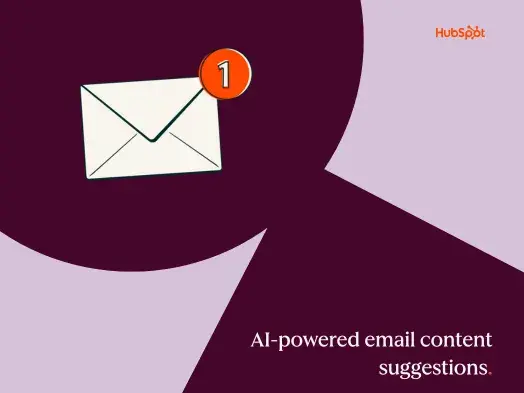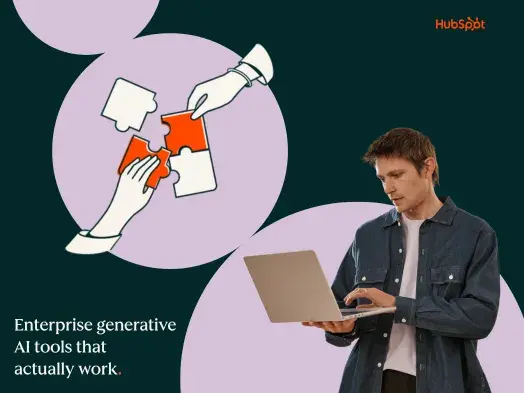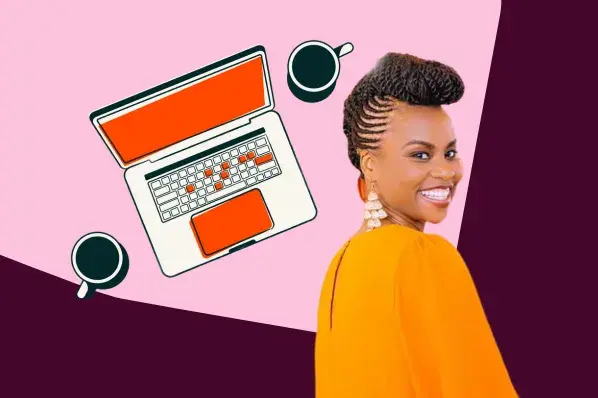We’ve all rolled our eyes at ads for knockoff Ray Bans or dubious ED cures that “doctors HATE.” It’s easy to smirk at them because it’s obvious those are fake accounts. Now imagine those ads backed by the voice or likeness of someone you trust.
Thanks to generative AI, it’s a scenario that some influencers and their brand partners are already experiencing. So what’s a marketer to do when they or their brand collaborator get deepfaked?
To find out, I spoke with two experts: One in PR/media relations and one in creator partnerships.
But first, let's take a look at the stakes.
Influencers are discovering deepfakes of themselves.
Just a few years ago, the idea of finding yourself digitally cloned and hawking scam products would have seemed like a far-fetched episode of Black Mirror.
Yet that’s exactly what happened to Michel Janse, a self-described “20-somethin’ gal” with almost 150,000 followers on TikTok.
In a recent video, Janse describes the horrifying experience of discovering a deepfake of herself being used to sell erectile dysfunction drugs.
Though it was “not her voice,” the fraudulent video included a fairly convincing replica of her likeness.
@michel.c.janse storytime: AI stole my likeness and created a deepfake of me ✌🏼😅 believe nothing 🫡
♬ original sound - Michel Janse
A similar case was recently covered in Bloomberg News when Jordan Howlett, a 26-year-old influencer with over 20 million followers, found his voice being used to peddle a phony cure for blindness.
While the article describes that video as “poorly edited,” the duplicated voice was accurate enough to leave Howlett “terrified” thanks to software from ElevenLabs.
And while the biggest impact is surely the assault on psychological safety, these deepfakes could also present a real danger to the victims’ livelihoods.
After all, the whole point of an influencer –their value to a brand sponsor– is their ability to, well, influence. And that requires credibility.
Could a deepfake hurt that credibility enough to make them a risk?
How Deepfakes Impact Influencer Brand Partnerships
According to senior SEO PR strategist at HubSpot Alice Sol, it boils down to communication.
“Personally, I think this can harm a brand partnership only if the influencer and the brand are not on the same page when it comes to communication and messaging after the fact,” she says.
Having worked in PR, SEO, and media relations, Alice is no stranger to maintaining good graces online.
Brandon Huang, principal marketing manager at HubSpot, echoes her sentiment.

“I’d actually find it a bit worrying if a brand cut ties with an influencer over something that happened to them without their consent or prior knowledge," he says.
As part of HubSpot’s Creators team, Brandon fosters relationships with content creators all the time.
But while both agree that a deepfake shouldn’t harm a partnership, that doesn’t mean nothing should be done. And the time to brainstorm that response is now.
“The best way to prevent this impacting the partnership is to plan for this ahead of time and assure that there’s a strategy in place,” says Sol.
How should brands respond if an influencer partner is deepfaked?
If you’re a marketer facing this situation, Huang recommends you start with a deep breath and a bit of compassion.
“It’s often outside of their control and done without consent, so we can’t blame the influencer for being deepfaked,” he says. “Instead, go in with an open mind, communicate, and ask for context from the influencer and his/her team.”
Having that conversation will also allow both parties to get on the same page, as Alice Sol recommended earlier.

“There’s no one-size-fits-all response in the event that an influencer is impersonated by a deepfake,” Sol says. “What should remain consistent, though, is the influencer and the brand should be able to communicate directly and act quickly to limit any false narratives.”
“Even if a partnership is brief, the brand and influencer should both be in lock-step,” she goes further. “This means crafting a plan together on how either the brand, influencer, or both will respond if a deepfake situation arises.”
She gives some high-level examples:
“This could look like the influencer posting a video or message about the deepfake and the brand reposting. This could also look like the brand publishing a clarifying statement and the influencer engaging with the post.”
Brandon also points out the importance of staying up-to-date on what technology is capable of.
“I also think brands should educate themselves on deepfakes and be able to decipher what is real and what is fake,” he says. “It’s getting more difficult with how good AI technology is getting, but keeping it top of mind and continually educating yourself about it will go a long way.”
But what about if you’re the one being targeted by the deepfake?
How should an influencer respond if they've been deepfaked?
Since an ounce of prevention is worth a pound of cure, Brandon recommends that influencers take these steps before a deepfake situation arises:
- Make sure you have a ‘link in bio’ with all of your official links. Your audience will be less likely to fall for fraud if they know it isn’t coming from an official source.
- Get all of your social media platforms verified. This can help cut down on deepfakes from “clone” channels with similar names.
- End threads with “This is the last tweet/post.” This prevents scammers from using similarly named accounts to sneak scams into the end of threaded posts.
If the worst happens, you might be tempted to ignore the deepfake and hope it goes away. In her TikTok video, Janse even points out that it may be a mistake to give it more attention.
However, our experts say addressing it proactively is exactly the right approach.
“Generally speaking, an influencer should respond if they have been deepfaked,” Alice Sol recommends.
“Many influencers build their brands based on the connection and authenticity they create with their community,” she explains. “In order to build that community, trust has to be established. If a deepfake harms that trust, it’s important for an influencer to use their platform to respond directly and minimize negative impact.”
Huang recommends going as far as alerting your brand partners.
“Get ahead of it and be aware of potential deepfakes before brands find out,” he says. “And be proactive about letting the brands know if it somehow impacts the brand.”
And if you’re not the first to spot the deepfake?
“If the brand finds out first, be open and transparent and communicate clearly that you were not involved, and it was done without your consent.”
Finally, you should report the fraudulent content to the platform that’s hosting the deepfake – and encourage your followers to do the same.
As deepfake technology grows more powerful and more widely available, it’s going to take a combination of government action and technological innovation to curb its impact.
Until then, it’s up to the rest of us to stay vigilant.
Artificial Intelligence






![AI email subject lines that drive 3x more revenue and actually convert [+ exclusive insights]](https://53.fs1.hubspotusercontent-na1.net/hubfs/53/ai-email-optimization-1-20251014-4500151-1.webp)




